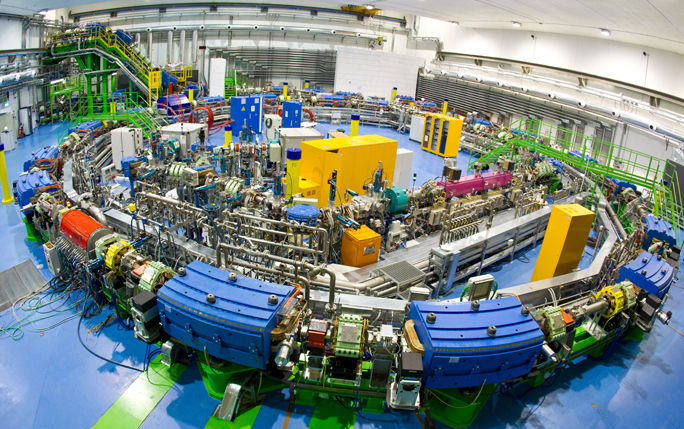Samuele visits OncoRay and CNAO to develop his project

Samuele Cotta, the OMA fellow based at ViALUX, is currently studying the irradiation conditions inside the treatment rooms. In order to get more data about the hadrontherapy environment, he has recently visited two OMA partners: OncoRay in Dresden and CNAO in Pavia.
The visit at OncoRay lasted only one morning, but was very useful for Samuele’s project. Dr. Daniela Kunath, a medical physicist at OncoRay, showed him the whole facility, including the treatment room and the experimental room, and explained how the cyclotron works and how the beam is delivered to the patients. Together with Dr. Wolfgang Enghardt, the leader of the Medical Radiation Physics department at OncoRay, they discussed about the secondary radiations inside the treatment room and what problems they can cause to the electronics, which is the main topic of Samuele’s project.
Afterwards Samuele spent two weeks at CNAO for his first secondment in the OMA project. During his stay he had a chance to discuss the hadrontherapy environment with the CNAO staff, including biomedical engineers, medical physicists and radiation protectionists, and obtain information which helps to have a complete and clear picture of the irradiation conditions in the treatment rooms. In particular, Samuele spent more than a week building and running a Geant4 simulation of the treatment room. The results were then discussed with Dr. Michele Ferrarini, the radiation safety officer at CNAO. The irradiation conditions at CNAO turned out to be very different from the OncoRay facility, since at CNAO the beam is generated by a synchrotron and delivered with the active pencil beam scanning technique, which limits considerably the secondary radiations.
This secondment was very interesting for Samuele also because he had a chance to see how a hadrontherapy facility is organized, and to observe the daily routine and assist in the quality assurance tests that are done every day before the treatments. Special thanks go to CNAO for the possibility to organize the secondment and for the hospitality, in particular to Dr. Monica Necchi, and to Hanen Ziri and Carlos Afonso, the two OMA fellows based at CNAO.